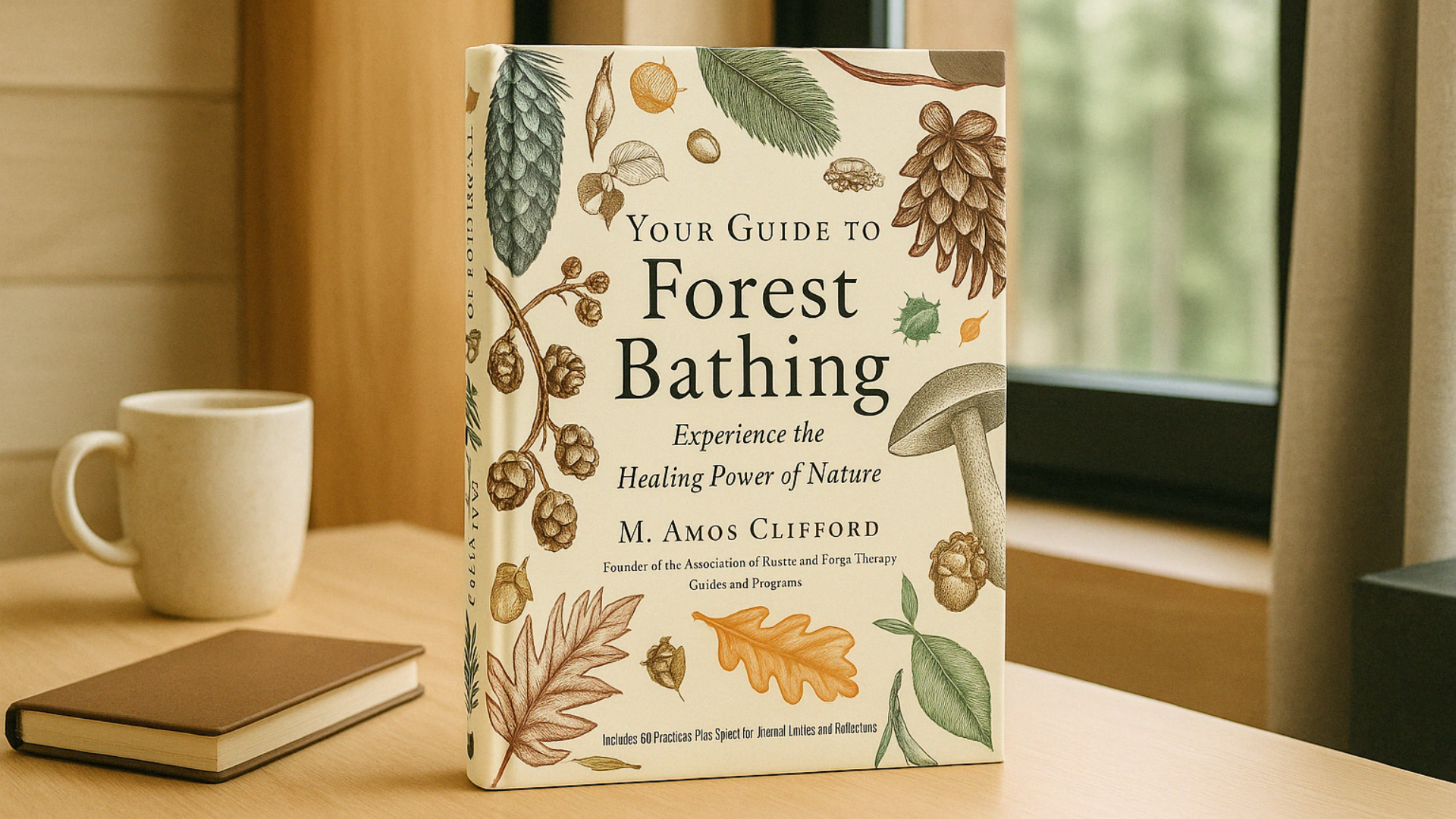Forest Bathing as a Path to Healing and Mindfulness

Book Review: Your Guide to Forest Bathing (Expanded Edition) by M. Amos Clifford
A gentle and grounded invitation to deepen our relationship with nature through mindful presence
In Your Guide to Forest Bathing, M. Amos Clifford shares a deeply intentional practice of reconnecting with the natural world. Forest bathing, or shinrin-yoku, is not a form of hiking or exercise. It is a way of being with nature that centres attention, sensory awareness, and relationship. Clifford, a former wilderness guide and psychotherapist, offers readers both a philosophical and practical guide to experiencing forests as spaces of healing and reciprocity.
This expanded edition brings together years of practice and teaching into a text that is reflective, informed, and welcoming. Rather than pushing us toward goals, Clifford gently invites us to slow down and remember that we already belong.
What the book promises
Clifford promises to introduce readers to the practice of forest bathing in a way that is accessible, meaningful, and grounded in lived experience. He offers clear guidance for those new to the practice, as well as deeper reflections for those who want to engage more fully with nature as a source of insight and restoration.
The book also promises to explore forest bathing as more than a wellness trend. Clifford positions it as a relational and restorative act. Through presence, intention, and gentle noticing, readers are encouraged to experience nature not just as scenery but as a living community to be in conversation with.
What the book delivers
This book delivers a rich blend of personal reflection, ecological awareness, and step-by-step guidance. Clifford outlines how to prepare for a forest bathing walk, what to bring, and how to engage with the natural environment in a way that supports presence and openness. His instructions are simple, yet spacious, offering freedom rather than prescription.
Each chapter offers sensory invitations, such as listening to birdsong, feeling the texture of bark, or walking slowly with awareness. These practices are accompanied by short meditations and gentle reflections on what it means to be in relationship with the more-than-human world.
Clifford also weaves in research on the physiological benefits of forest immersion. He discusses how natural environments support stress reduction, immune function, and overall mental well-being. These sections are informative without being overly clinical. They support the practice without reducing it to measurable outcomes.
What stands out most is the reverence Clifford holds for the natural world. He writes not just about technique but about presence, gratitude, and humility. He asks readers to listen, to slow down, and to honour the land they walk on. This care is felt on every page.
Style and structure
Clifford’s writing is spacious, poetic, and considered. His tone is gentle, steady, and grounded in personal experience. He encourages readers to pause, observe, and approach the natural world with patience rather than urgency.
The structure of the book follows a natural arc. It begins with the foundations of forest bathing and builds toward more nuanced explorations of connection, memory, grief, and reciprocity. The language remains clear and inclusive throughout. Clifford provides a framework without becoming prescriptive, which allows the reader to adapt the practice to their own context.
This expanded edition includes prompts and space for reflection, which supports personal engagement. Readers are not simply reading about forest bathing. They are encouraged to begin participating in it as they move through the text.
Where the book shines
The strength of this book lies in its ability to hold depth without creating distance. Clifford speaks to the reader with quiet reverence, always inviting rather than instructing. He brings the reader into a deeper kind of listening, one that makes space for both the inner landscape and the outer one.
His approach to the natural world is relational rather than utilitarian. Clifford avoids framing the forest as a tool for personal gain. Instead, he encourages readers to see it as a living presence, worthy of respect and care. This shift in framing gives the practice a sense of dignity and belonging.
He also integrates personal story, scientific context, and spiritual awareness in a way that feels balanced and sincere. Readers can connect to whichever aspect speaks to them most. The book does not push one worldview. Instead, it opens the door to many ways of knowing and being in the forest.
Light limitations
The reflective tone and slow pacing may not suit readers seeking a structured or outcome-focused guide. This book is more of an invitation than a program. Those looking for a checklist or measurable goals may need to adjust expectations.
Some of the language around reciprocity and connection assumes a certain openness to spiritual or relational perspectives. While Clifford writes inclusively and without dogma, readers who prefer a more secular or purely scientific framework may not resonate with every concept.
Those without easy access to nature may wish for additional suggestions on how to adapt the practice to urban or indoor environments. Clifford touches on this briefly but focuses primarily on outdoor forest settings.
Final thoughts
Your Guide to Forest Bathing is a restorative and deeply respectful guide for anyone seeking to reconnect with nature in a more intentional and reciprocal way. M. Amos Clifford offers not just instruction, but a reorientation. He reminds us that presence is more powerful than productivity and that healing often begins when we remember we are not separate from the world around us.
This book is not a set of steps to follow. It is an open door. For those who are ready to listen to the forest and to themselves with new attention, it offers a grounded and generous path.
Highly recommended for nature lovers, therapists, educators, and anyone experiencing disconnection or overwhelm.